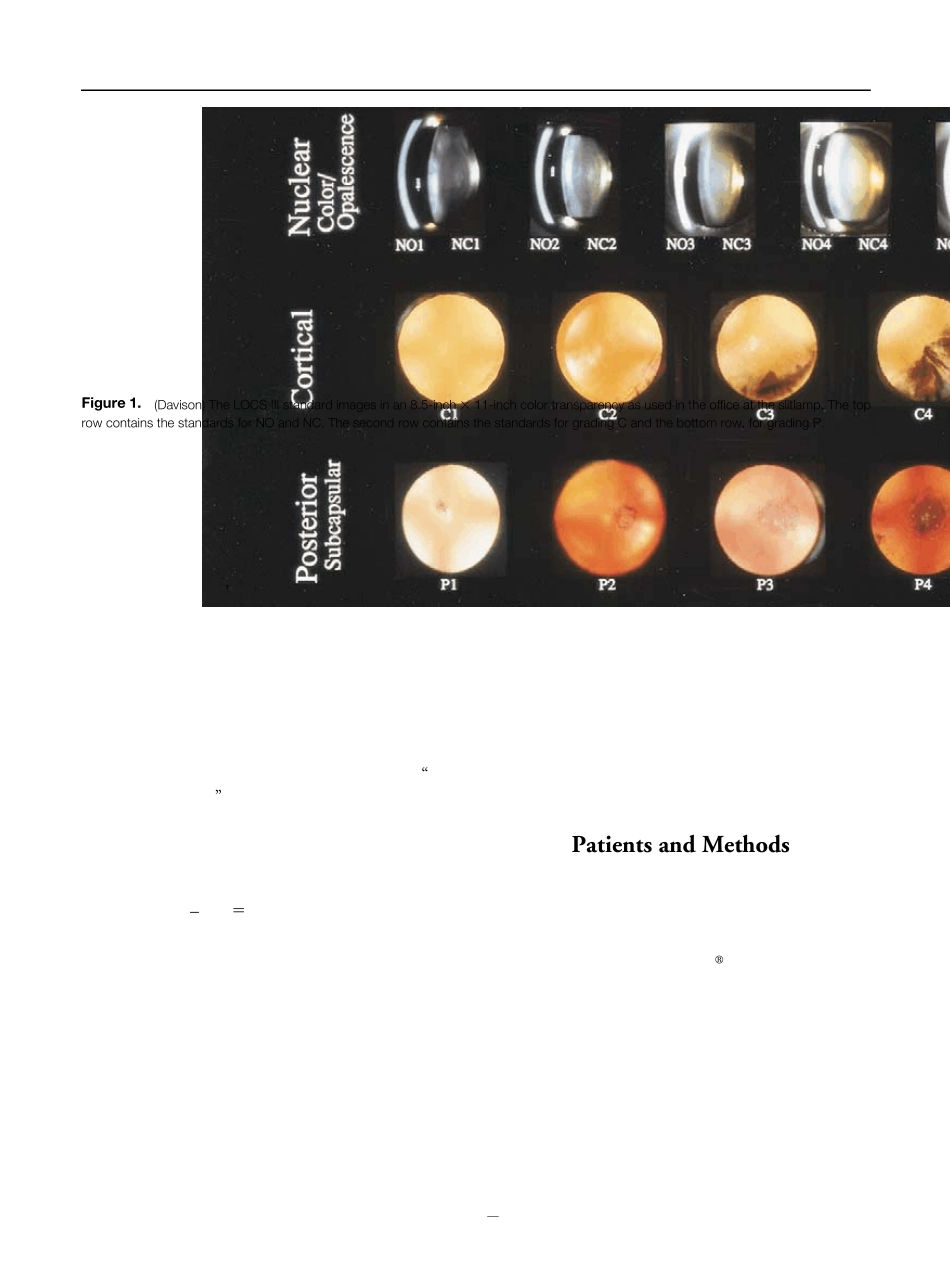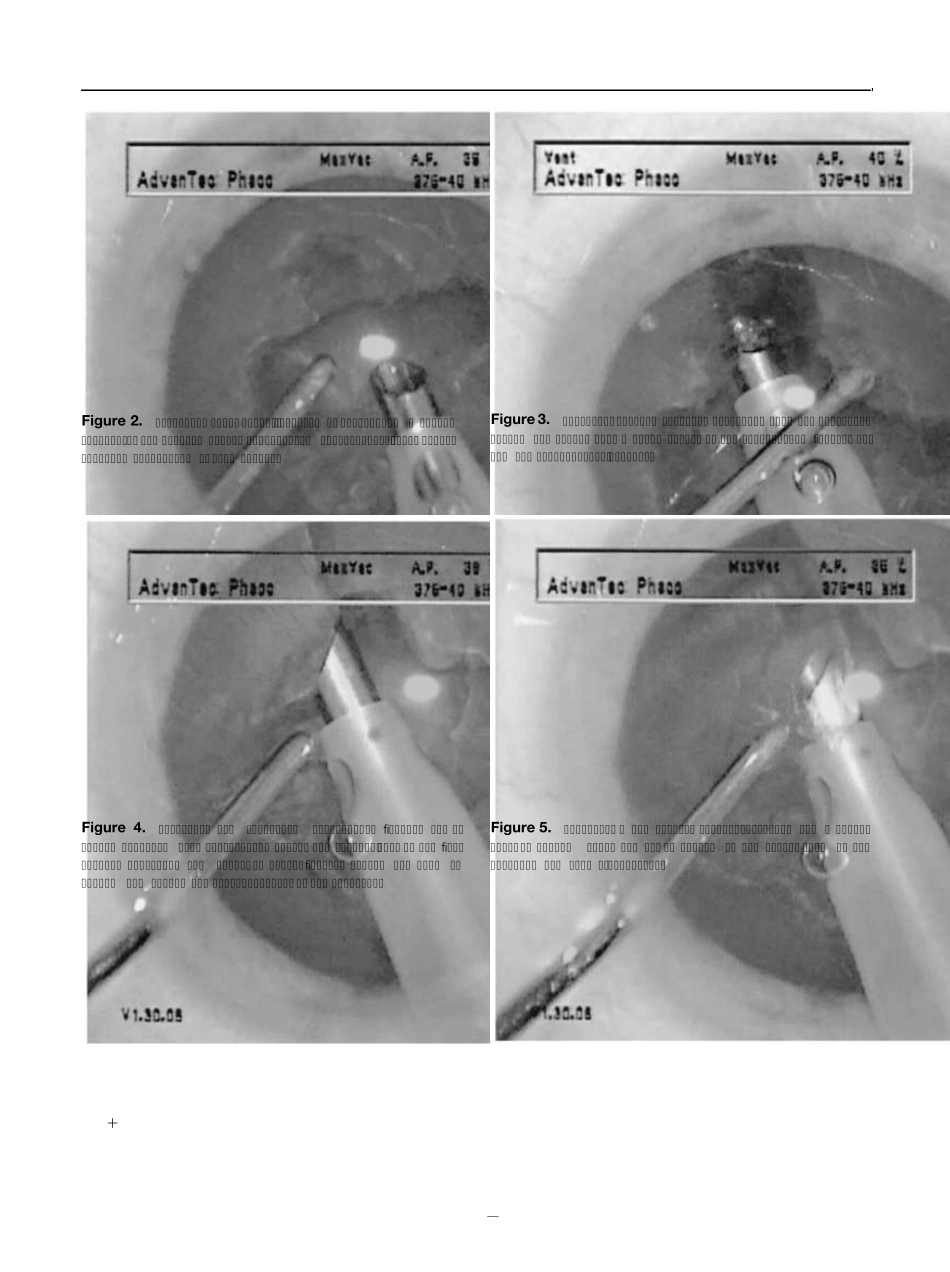Clinical application of the Lens OpacitiesClassification System III in the performanceof phacoemulsificationJames A. Davison, MD, Leo T. Chylack Jr., MDPu rpose: To report the correlation of features of cataracts graded by the LensOpacities Classification System, version III (LOCS III), with phacoemulsificationenergy expenditure and the balanced salt solution (BSS® ) volume used duringcataract surgery.Setting: Wolfe Clinic, Marshalltown, Iowa, USA.Methods: This was a retrospective review of 2364 cases operated on by a singlesurgeon from January 1998 to July 2000 in which the cataract had been gradedat the slitlamp using the 4 grading scales of the LOCS III: nuclear opalescence(NO), nuclear color (NC), cortical cataract (C), and posterior subcapsular cataract(P). Polynomial best-fit lines were derived using regression analysis correlating the4 preoperative LOCS III characteristics with 3 intraoperative observations: ma-chine-measured phacoemulsification time, mean power expenditure, and BSSvolume.Resu lts: As determined by best-fit lines and their coefficient of determination(R2), there were exponential relationships between machine-measured phaco-emulsification time and the degree of NC (R2 ϭ 0.48) and NO (R2 ϭ 0.40). Trendsexisted between NC and NO and the amount of BSS used (R2 ϭ 0.08 and R2 ϭ0.07, respectively). No relationships were observed between the LOCS III classesof cataract, C and P, at any intraoperative observation.Conclu sions: Exponentially, greater phacoemulsification energy was required asNC and NO increased. The LOCS III cataract grading system enhanced the abilityto estimate ultrasonic energy expenditure and BSS volume use during phaco-emulsification. Preoperative LOCS III cataract classification can help t...


